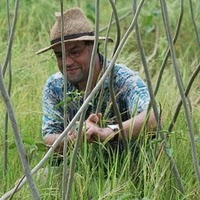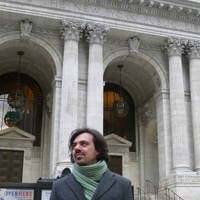People, Land and Politics. Demographic Developments and the Transformation of Roman Italy, 300 BC-AD14., Jan 1, 2008
"In my article defending Lo Cascio’s interpretation of the Augustan census figures and the conseq... more "In my article defending Lo Cascio’s interpretation of the Augustan census figures and the consequent high estimate for the population of Italy under Augustus (comparable to the population of Italy ca. 1800), I deliberately avoided any comment on the level of agricultural productivity in Roman Italy. Nor did I address in any detail the possible defence of the Beloch-Toynbee-Brunt population hypothesis based upon estimates of the agricultural carrying capacity of Italy. One could argue that one is unlikely, using Greco-Roman agricultural methods, to be able to feed a population comparable to that of 19th century Italy, particularly given that anthropometric evidence suggests a level of nutrition for Roman Italy that would not be attained in Early Modern Italy until the mid-20th century. I find this argument unconvincing, however, and I will canvass a few of the arguments against it in my contribution to this colloquium. Pleket’s ground-breaking comparative analysis of Roman and Early Modern agrarian history, and evidence for a significantly higher level of agricultural intensification in the Mezzogiorno during the Roman period cast doubt on Brunt’s pessimistic model of Roman agriculture. In my talk, I will briefly outline some of my own and others’ recent agronomic research on the high productivity of Roman mixed farming and animal husbandry, pointing out how archaeozoological and archaeobotanical evidence contradicts the conventional view of the poverty of Greco-Roman farming.
The core of my paper will place the model of Toynbee and Brunt into a broader comparative perspective by examining the influence upon their picture of a conscious or unconscious analogy with English agrarian capitalism of the long 18th century, as typified by the enclosure movement and the Highland clearances. The orthodox interpretation of most Classical historians, influenced by Brunt’s pessimistic estimate of the productivity of farming by small-holding owner-occupiers, is based, I will argue, upon an uncritical acceptance of the hostile (and often self-interested) ideological attacks on peasant farming by the exponents of the English model of vast concentrated landholdings and large scale commercial tenant farming using landless labourers. I intend to examine this prejudice in the light of the critique of the Genevan economist Sismondi, using evidence for the productivity of 16th century English, and 17th and 18th century Dutch peasant farming as well as that of small holders in North America. I wish to show that the model of diversified intensive small-holdings idealized by the Romans and advocated by the Gracchi is in fact highly productive and commercially viable. I will show that the methods outlined by Cato the elder, and those later advocated, based on Hellenistic and Carthaginian agronomic practice, by Varro and Columella are well adapted for small-holders.
In addition, I wish to briefly address some weaknesses in the modern interpretation of the phenomenon of latifundia and the concentration of land-holdings contrary to the Licinian Sextian laws. Critical problems emerge in the conventional view as soon as one situates it within a broader historical perspective. Our ancient epigraphical and archaeological evidence argues strongly for the continued viability of small farms in the Gracchan period and beyond, a marked contrast with the profound proletarianization of the English rural populaton revealed in Bateman’s survey of landed property in Victorian England. Further, I will argue that the attitudes of wealthy Romans towards the acquisition and management of landed property strongly favour relatively small capital intensive farms rather than large or extensive estates, and will have placed far less pressure than is typically allowed upon the land available for small-holders. The Gracchan agrarian reforms can be seen as the acceleration of a long-standing and relatively uncontroversial Roman tradition of providing land grants to poor or landless farmers, so dramatically different from the adamant opposition of the English landed interest to the acquisition even of small garden plots by their labourers. The alarm of the Roman optimates ought therefore to be seen in terms of the broader political implications of the aggressive use of tribunician legislation to relax their grip on power, coming as it did, in the context of the successful popularis campaign to introduce the secret ballot, which had succeeded only a few years earlier, in 139 BC. Finally, I will argue that Rosenstein's critique of the Brunt thesis is even more compelling if one corrects for the low population estimate and pessimistic estimate of the productivity of peasant farms. It is highly likely that paid military service, supplemented with booty from successful campaigns, would have served as an important safety-valve to cushion the impact of the chronic land-hunger of Roman and Italian small-holders."











Uploads
Papers by Geoffrey Kron
There is a great deal to admire, and much to agree with, in de Ligt’s extremely rich and learned book, but on the question of the Augustan census figures, his arguments only show how complex and fragile any defense of such a fundamental error must be, and that if a convincing case for an inherently unlikely proposition cannot be sustained by advocates as able as Karl Julius Beloch, Peter Brunt, Walter Scheidel and Luuk de Ligt, it had best be abandoned. Nevertheless, his most substantial new argument in defence of Beloch’s conjecture, the analysis of the urban population of Northern Italy, calls out for a detailed response, since it can be seductively plausible on a first reading. Although it is the total population of Northern Italy, rather than its urban component, which is critical to the debate on the population of Roman Italy, it is important to vindicate the clear and unambiguous testimony of our sources lauding the great wealth, large cities, and high population of Cisalpina. This is a complex and very interesting question, regardless of one’s interest in the demographic debate, given the relative dearth of archaeological, literary, documentary and epigraphical evidence for the Northern cities, and the intractable methodological problems faced by pre-historians, anthropologists, archaeologists and Classicists who attempt to extrapolate urban populations from archaeological remains of settlements in the absence of clear guidance from reliable census data. I intend to show that de Ligt’s population estimates for the cities of Northern Italy are unrealistically low, frequently contradicted by relevant literary, epigraphic, or archaeological evidence. He consistently understates the likely extent of the inhabited area of each city, ignoring the continual plundering and destruction of, and difficulty in recovering archaeological evidence for ancient habitation in urban environments continuously occupied for centuries. I also intend to discuss in some depth de Ligt’s use of ancient and Medieval Italian comparative evidence in offering estimates of likely population densities in Roman cities, in particular his calculations of low Medieval population densities, and claims about the absence of multi-storey buildings in both Medieval and Roman cities. On the latter question, I will briefly offer a new hypothesis regarding the solution of the vexed problem of the interpretation of the term insula in the Roman regionaries, and how we might use this solution to get some evidence on the density of apartment buildings in Rome and Ostia.
Although modern social scientists have used the evidence of housing as a useful proxy for the distribution and level of income in poorly documented societies, and archaeological evidence permits us to reconstruct housing standards for Greeks and Romans from a wide range of social classes in considerable detail, ancient economic historians have only begun to exploit this critical evidence. Ian Morris has argued for a dramatic improvement in Greek living standards between the 9th and the 4th centuries B.C. based upon the increase in the size and cost of housing. Moreover, Wolfram Hoepfner and Ernst-Ludwig Schwander have argued for the social and political significance of the striking egalitarianism in Greek housing. For Rome, Andrew Wallace-Hadrill and Paul Zanker have analyzed housing at Pompeii and Herculaneum, pointing out the existence of a large and relatively prosperous middle-income group. For the most part, however, such studies have failed to move from impressions to a full quantification of their results. Even Wallace-Hadrill’s superb study, which was based upon a carefully compiled survey and analyzed his sample to yield fascinating and valuable statistical evidence, left a number of possible avenues of analysis unexplored and eschewed quantitative, as opposed to impressionistic, comparisons with other cultures or historical periods.
I propose to examine a number of archaeological samples of Greco-Roman housing in the light of the housing, wealth and income distribution in a number of pre- and early industrial cultures. The study of housing further supports the evidence for Greco-Roman mean heights and agricultural productivity, and suggests that the distribution of income in both Greek and Roman society was likely to have been significantly more egalitarian than in most pre-industrial cultures. To cite just one implication of this research, I will argue that previous estimates of GDP per capita for the Roman empire proposed by Goldthwaite, Temin, Maddison, Scheidel & Friesen, and by Milanovic, Lindert, & Williamson would need to be adjusted significantly upwards."
The core of my paper will place the model of Toynbee and Brunt into a broader comparative perspective by examining the influence upon their picture of a conscious or unconscious analogy with English agrarian capitalism of the long 18th century, as typified by the enclosure movement and the Highland clearances. The orthodox interpretation of most Classical historians, influenced by Brunt’s pessimistic estimate of the productivity of farming by small-holding owner-occupiers, is based, I will argue, upon an uncritical acceptance of the hostile (and often self-interested) ideological attacks on peasant farming by the exponents of the English model of vast concentrated landholdings and large scale commercial tenant farming using landless labourers. I intend to examine this prejudice in the light of the critique of the Genevan economist Sismondi, using evidence for the productivity of 16th century English, and 17th and 18th century Dutch peasant farming as well as that of small holders in North America. I wish to show that the model of diversified intensive small-holdings idealized by the Romans and advocated by the Gracchi is in fact highly productive and commercially viable. I will show that the methods outlined by Cato the elder, and those later advocated, based on Hellenistic and Carthaginian agronomic practice, by Varro and Columella are well adapted for small-holders.
In addition, I wish to briefly address some weaknesses in the modern interpretation of the phenomenon of latifundia and the concentration of land-holdings contrary to the Licinian Sextian laws. Critical problems emerge in the conventional view as soon as one situates it within a broader historical perspective. Our ancient epigraphical and archaeological evidence argues strongly for the continued viability of small farms in the Gracchan period and beyond, a marked contrast with the profound proletarianization of the English rural populaton revealed in Bateman’s survey of landed property in Victorian England. Further, I will argue that the attitudes of wealthy Romans towards the acquisition and management of landed property strongly favour relatively small capital intensive farms rather than large or extensive estates, and will have placed far less pressure than is typically allowed upon the land available for small-holders. The Gracchan agrarian reforms can be seen as the acceleration of a long-standing and relatively uncontroversial Roman tradition of providing land grants to poor or landless farmers, so dramatically different from the adamant opposition of the English landed interest to the acquisition even of small garden plots by their labourers. The alarm of the Roman optimates ought therefore to be seen in terms of the broader political implications of the aggressive use of tribunician legislation to relax their grip on power, coming as it did, in the context of the successful popularis campaign to introduce the secret ballot, which had succeeded only a few years earlier, in 139 BC. Finally, I will argue that Rosenstein's critique of the Brunt thesis is even more compelling if one corrects for the low population estimate and pessimistic estimate of the productivity of peasant farms. It is highly likely that paid military service, supplemented with booty from successful campaigns, would have served as an important safety-valve to cushion the impact of the chronic land-hunger of Roman and Italian small-holders."
There is a great deal to admire, and much to agree with, in de Ligt’s extremely rich and learned book, but on the question of the Augustan census figures, his arguments only show how complex and fragile any defense of such a fundamental error must be, and that if a convincing case for an inherently unlikely proposition cannot be sustained by advocates as able as Karl Julius Beloch, Peter Brunt, Walter Scheidel and Luuk de Ligt, it had best be abandoned. Nevertheless, his most substantial new argument in defence of Beloch’s conjecture, the analysis of the urban population of Northern Italy, calls out for a detailed response, since it can be seductively plausible on a first reading. Although it is the total population of Northern Italy, rather than its urban component, which is critical to the debate on the population of Roman Italy, it is important to vindicate the clear and unambiguous testimony of our sources lauding the great wealth, large cities, and high population of Cisalpina. This is a complex and very interesting question, regardless of one’s interest in the demographic debate, given the relative dearth of archaeological, literary, documentary and epigraphical evidence for the Northern cities, and the intractable methodological problems faced by pre-historians, anthropologists, archaeologists and Classicists who attempt to extrapolate urban populations from archaeological remains of settlements in the absence of clear guidance from reliable census data. I intend to show that de Ligt’s population estimates for the cities of Northern Italy are unrealistically low, frequently contradicted by relevant literary, epigraphic, or archaeological evidence. He consistently understates the likely extent of the inhabited area of each city, ignoring the continual plundering and destruction of, and difficulty in recovering archaeological evidence for ancient habitation in urban environments continuously occupied for centuries. I also intend to discuss in some depth de Ligt’s use of ancient and Medieval Italian comparative evidence in offering estimates of likely population densities in Roman cities, in particular his calculations of low Medieval population densities, and claims about the absence of multi-storey buildings in both Medieval and Roman cities. On the latter question, I will briefly offer a new hypothesis regarding the solution of the vexed problem of the interpretation of the term insula in the Roman regionaries, and how we might use this solution to get some evidence on the density of apartment buildings in Rome and Ostia.
Although modern social scientists have used the evidence of housing as a useful proxy for the distribution and level of income in poorly documented societies, and archaeological evidence permits us to reconstruct housing standards for Greeks and Romans from a wide range of social classes in considerable detail, ancient economic historians have only begun to exploit this critical evidence. Ian Morris has argued for a dramatic improvement in Greek living standards between the 9th and the 4th centuries B.C. based upon the increase in the size and cost of housing. Moreover, Wolfram Hoepfner and Ernst-Ludwig Schwander have argued for the social and political significance of the striking egalitarianism in Greek housing. For Rome, Andrew Wallace-Hadrill and Paul Zanker have analyzed housing at Pompeii and Herculaneum, pointing out the existence of a large and relatively prosperous middle-income group. For the most part, however, such studies have failed to move from impressions to a full quantification of their results. Even Wallace-Hadrill’s superb study, which was based upon a carefully compiled survey and analyzed his sample to yield fascinating and valuable statistical evidence, left a number of possible avenues of analysis unexplored and eschewed quantitative, as opposed to impressionistic, comparisons with other cultures or historical periods.
I propose to examine a number of archaeological samples of Greco-Roman housing in the light of the housing, wealth and income distribution in a number of pre- and early industrial cultures. The study of housing further supports the evidence for Greco-Roman mean heights and agricultural productivity, and suggests that the distribution of income in both Greek and Roman society was likely to have been significantly more egalitarian than in most pre-industrial cultures. To cite just one implication of this research, I will argue that previous estimates of GDP per capita for the Roman empire proposed by Goldthwaite, Temin, Maddison, Scheidel & Friesen, and by Milanovic, Lindert, & Williamson would need to be adjusted significantly upwards."
The core of my paper will place the model of Toynbee and Brunt into a broader comparative perspective by examining the influence upon their picture of a conscious or unconscious analogy with English agrarian capitalism of the long 18th century, as typified by the enclosure movement and the Highland clearances. The orthodox interpretation of most Classical historians, influenced by Brunt’s pessimistic estimate of the productivity of farming by small-holding owner-occupiers, is based, I will argue, upon an uncritical acceptance of the hostile (and often self-interested) ideological attacks on peasant farming by the exponents of the English model of vast concentrated landholdings and large scale commercial tenant farming using landless labourers. I intend to examine this prejudice in the light of the critique of the Genevan economist Sismondi, using evidence for the productivity of 16th century English, and 17th and 18th century Dutch peasant farming as well as that of small holders in North America. I wish to show that the model of diversified intensive small-holdings idealized by the Romans and advocated by the Gracchi is in fact highly productive and commercially viable. I will show that the methods outlined by Cato the elder, and those later advocated, based on Hellenistic and Carthaginian agronomic practice, by Varro and Columella are well adapted for small-holders.
In addition, I wish to briefly address some weaknesses in the modern interpretation of the phenomenon of latifundia and the concentration of land-holdings contrary to the Licinian Sextian laws. Critical problems emerge in the conventional view as soon as one situates it within a broader historical perspective. Our ancient epigraphical and archaeological evidence argues strongly for the continued viability of small farms in the Gracchan period and beyond, a marked contrast with the profound proletarianization of the English rural populaton revealed in Bateman’s survey of landed property in Victorian England. Further, I will argue that the attitudes of wealthy Romans towards the acquisition and management of landed property strongly favour relatively small capital intensive farms rather than large or extensive estates, and will have placed far less pressure than is typically allowed upon the land available for small-holders. The Gracchan agrarian reforms can be seen as the acceleration of a long-standing and relatively uncontroversial Roman tradition of providing land grants to poor or landless farmers, so dramatically different from the adamant opposition of the English landed interest to the acquisition even of small garden plots by their labourers. The alarm of the Roman optimates ought therefore to be seen in terms of the broader political implications of the aggressive use of tribunician legislation to relax their grip on power, coming as it did, in the context of the successful popularis campaign to introduce the secret ballot, which had succeeded only a few years earlier, in 139 BC. Finally, I will argue that Rosenstein's critique of the Brunt thesis is even more compelling if one corrects for the low population estimate and pessimistic estimate of the productivity of peasant farms. It is highly likely that paid military service, supplemented with booty from successful campaigns, would have served as an important safety-valve to cushion the impact of the chronic land-hunger of Roman and Italian small-holders."
There is a great deal to admire, and much to agree with, in de Ligt’s extremely rich and learned book, but on the question of the Augustan census figures, his arguments only show how complex and fragile any defense of such a fundamental error must be, and that if a convincing case for an inherently unlikely proposition cannot be sustained by advocates as able as Karl Julius Beloch, Peter Brunt, Walter Scheidel and Luuk de Ligt, it had best be abandoned. Nevertheless, his most substantial new argument in defence of Beloch’s conjecture, the analysis of the urban population of Northern Italy, calls out for a detailed response, since it can be seductively plausible on a first reading. Although it is the total population of Northern Italy, rather than its urban component, which is critical to the debate on the population of Roman Italy, it is important to vindicate the clear and unambiguous testimony of our sources lauding the great wealth, large cities, and high population of Cisalpina. This is a complex and very interesting question, regardless of one’s interest in the demographic debate, given the relative dearth of archaeological, literary, documentary and epigraphical evidence for the Northern cities, and the intractable methodological problems faced by pre-historians, anthropologists, archaeologists and Classicists who attempt to extrapolate urban populations from archaeological remains of settlements in the absence of clear guidance from reliable census data. I intend to show that de Ligt’s population estimates for the cities of Northern Italy are unrealistically low, frequently contradicted by relevant literary, epigraphic, or archaeological evidence. He consistently understates the likely extent of the inhabited area of each city, ignoring the continual plundering and destruction of, and difficulty in recovering archaeological evidence for ancient habitation in urban environments continuously occupied for centuries. I also intend to discuss in some depth de Ligt’s use of ancient and Medieval Italian comparative evidence in offering estimates of likely population densities in Roman cities, in particular his calculations of low Medieval population densities, and claims about the absence of multi-storey buildings in both Medieval and Roman cities. On the latter question, I will briefly offer a new hypothesis regarding the solution of the vexed problem of the interpretation of the term insula in the Roman regionaries, and how we might use this solution to get some evidence on the density of apartment buildings in Rome and Ostia.
I propose to concentrate on one specific issue, comparing and contrasting the opportunities for economic and social mobility on the part of the freed slave in Greco-Roman antiquity and the American South, and the ways in which legal restrictions, broader social attitudes and ideologies either encouraged or constrained these opportunities. The striking wealth and political, cultural and social influence attained by certain prominent Greek and Roman freedmen has long attracted considerable attention from modern scholars (Treggiari 1969; Christes 1979; Kudlien 1986; Mouritsen 2011), and their thorough integration into ancient society has elicited some sharp disapproval from the more conservative (Frank 1916; Duff 1928; cf. McKeown 2007: 11-29), but in the absence of reliable statistics, it can be difficult to interpret our evidence. A much fuller picture, both personal and statistical, can be drawn for the lives of manumitted slaves and free blacks in the American South, however, and clearly shows that a number of freedmen, despite facing much lower prospects of manumission, significantly harsher legal restrictions, less access to education, and persistent hostility, discrimination and racist violence, succeeded in achieving a measure of economic independence and even wealth (Franklin 1943; Sterkx 1972; Berlin 1975; Coger 1985; Johnson & Roark 1986; Schweniger 1990). I intend to explore how a detailed comparison of the structural impediments, social prejudices and legal disabilities faced by freedmen in each society, and of the opportunities held out to freedmen for acceptance in the mainstream can permit us to explain the level of social mobility attested in the American South, and to estimate, however crudely, what realistic prospects of higher socio-economic status Greco-Roman freedmen are likely to have enjoyed.
References:
Berlin, Ira. 1975. Slaves Without Masters: The Free Negro in the Antebellum South. New York: Oxford University Press.
Blackmon, Douglas A. 2008. Slavery by another name: the re-enslavement of black Americans from the Civil War to World War II. New York: Doubleday.
Booth, Alan D. 1979. "Schooling for slaves in first-century Rome," Transactions of the American Philological Association 109: 11-19.
Bradley, Keith. 1987. Slaves and Masters in the Roman Empire: A Study in Social Control. Cambridge: Cambridge University Press.
Bradley, Keith. 1994. Slavery and Society at Rome. Cambridge: Cambridge University Press.
Christes, Johannes. 1979. Sklaven und Freigelassene als Grammatiker und Philologen im antiken Rom. Wiesbaden: Franz Steiner Verlag.
Coger, Larry. 1985. Black Slaveowners: Free Black Slave Masters in South Carolina, 1790-1860. Columbia: South Carolina Press.
Del Lago, Enrico, Katsari, Konstantina. 2008. "Ideal models of slave management in the Roman world and in the ante-bellum American South," in Slave Systems Ancient and Modern, edited by E. Del Lago, K. Katsari, 187-213. Cambridge: Cambridge University Press.
Duff, A.M. 1928. Freedmen in the Early Roman Empire. Oxford: Oxford University Press.
Fogel, Roger W., Engerman, Stanley L. 1974. Time on the Cross, 2 vols. Boston: Little, Brown and Company.
Fogel, Robert W., Galantine, Ralph A., Manning, Richard L. 1992. Without consent or contract, 2 vols. New York: W.W. Norton.
Frank, Tenney. 1916. "Race Mixture in the Roman Empire," The American Historical Review 21: 689-708.
Franklin, John Hope. 1943. The Free Negro in North Carolina 1790-1860. New York: Russell & Russell.
Johnson, Michael P., Roark, James L. 1986. Black Masters: A Free Family of Color in the Old South. New York: W.W. Norton & Company.
Kudlien, Fridolf. 1986. Die Stellung des Arztes in der römischen Gesellschaft: freigeborene Römer, Eingebürgerte, Peregrine, Sklaven, Freigelassene als Ärzte. Wiesbaden: Franz Steiner.
McKeown, Niall. The Invention of ancient slavery.
Mouritsen, Henrik. 2011. The Freedman in the Roman World. Cambridge: Cambridge University Press.
Myrdal, Gunnar. 1944. An American dilemma: the Negro problem and modern democracy. New York-London: Harper & Brothers.
Patterson, Orlando. Slavery and Social Death: A Comparative Study. Cambridge, MA: Harvard University Press.
Scheidel, Walter. 2008. "The comparative economics of slavery in the Greco-Roman world," in Slave Systems Ancient and Modern, edited by E. Del Lago, K. Katsari, 105-126. Cambridge: Cambridge University Press.
Scheidel, Walter. 2012. "Slavery," in The Cambridge Companion to the Roman Economy, edited by W. Scheidel, 89-113. Cambridge: Cambridge University Press.
Schweniger, Loren. 1990. Black Property Owners in the South, 1790-1915. Urbana: University of Illinois Press.
Sterkx, H. E. 1972. The Free Negro in ante-bellum Louisiana. Rutherford-Madison-Teaneck: Fairleigh Dickinson University Press.
Treggiari, Susan. 1969. Roman Freedman during the late Republic. Oxford: Clarendon Press.
Woodward, C. Vann. 1974. Strange career of Jim Crow. New York: Oxford University Press.
"
However, few economic historians have given proper consideration to the role of democratic social change, the welfare state, and the consumer demand of a robust middle class, rather than industrial technology, in the rise of the 'affluent society' after World War II.
In this talk, I compare nutrition, health and living standards, social inequality, and political institutions in early industrial England and the Greco-Roman world, in order to provide a deeper perspective on the social origins of laissez-faire capitalist ideology, and its continuing toxic legacy of stifling economic growth and perpetuating social injustice and neo-colonial exploitation."
Behind all of the clever jokes, however, lay a remarkable economic achievement. All along the Tyrrhenian coast, and beyond, these Roman fish-fanciers built massive hydraulic concrete fish-ponds, expertly designed to support fish-farming more intensive than any which would be seen before the 1970s and 80's. But mariculture, or the farming of sea fish, was only the most demanding and capital intensive branch of a remarkable Roman agricultural industry dubbed pastio villatica. Building on centuries of Greek experience, the Romans also published elaborate manuals for the expert farming of game such as wild boar, red and fallow deer, elk, hares and rabbits, as well as an astonishing list of game-birds. Not content with such prosaic classics as ducks and geese, squab, pheasant, grouse, partridge, quail and pea-fowl, Roman tables were loaded with thrushes and other songbirds, as well as such exotic birds as flamingoes, swans, cranes, even ostrich.
Using literary sources, mosaics, wall-paintings, as well as archaeological evidence, primarily actual fishponds and villas, and the remains of birds, fish, game and shellfish, I will show how the Romans were able to provide a diet as rich in fish and game as that of contemporary Parisians.
The original abstract of the paper follows:
A number of scholars (Patterson 1982; Bradley 1987; Bradley 1994; Del Lago & Katsari 2008; Scheidel 2008; 2012) have considered the potential value of evidence from America's ante-bellum South for the understanding of Greco-Roman slavery, yet it is fair to say that this rich vein of comparative evidence has only just begun to be exploited. It is widely, and surely correctly, observed that there are some profound historical differences between these two slave systems, most notably in the absence of an ideology asserting the innate superiority of master over slave in ancient world, radical differences in rates of manumission, and very significant contrasts in the relative size of the slave population. Nevertheless, the experience of slaves and freedmen in the American South, both in the ante-bellum period, as well as after emancipation (Myrdal 1944; Woodward 1974; Schweniger 1990; Blackmon 2008), offers significant insights for our reconstruction of ancient slavery, not only because of the mass of documentary and econometric evidence available (Fogel & Engerman 1974; Fogel et al. 1992), but also because both societies were forced to confront, in a way more avowedly hierarchical and undemocratic slave-owning societies were not, the problem of maintaining control, by law and by force, of an un-free population in a society of free citizens.
I propose to concentrate on one specific issue, comparing and contrasting the opportunities for economic and social mobility on the part of the freed slave in Greco-Roman antiquity and the American South, and the ways in which legal restrictions, broader social attitudes and ideologies either encouraged or constrained these opportunities. The striking wealth and political, cultural and social influence attained by certain prominent Greek and Roman freedmen has long attracted considerable attention from modern scholars (Treggiari 1969; Christes 1979; Kudlien 1986; Mouritsen 2011), and their thorough integration into ancient society has elicited some sharp disapproval from the more conservative (Frank 1916; Duff 1928; cf. McKeown 2007: 11-29), but in the absence of reliable statistics, it can be difficult to interpret our evidence. A much fuller picture, both personal and statistical, can be drawn for the lives of manumitted slaves and free blacks in the American South, however, and clearly shows that a number of freedmen, despite facing much lower prospects of manumission, significantly harsher legal restrictions, less access to education, and persistent hostility, discrimination and racist violence, succeeded in achieving a measure of economic independence and even wealth (Franklin 1943; Sterkx 1972; Berlin 1975; Coger 1985; Johnson & Roark 1986; Schweniger 1990). I intend to explore how a detailed comparison of the structural impediments, social prejudices and legal disabilities faced by freedmen in each society, and of the opportunities held out to freedmen for acceptance in the mainstream can permit us to explain the level of social mobility attested in the American South, and to estimate, however crudely, what realistic prospects of higher socio-economic status Greco-Roman freedmen are likely to have enjoyed.